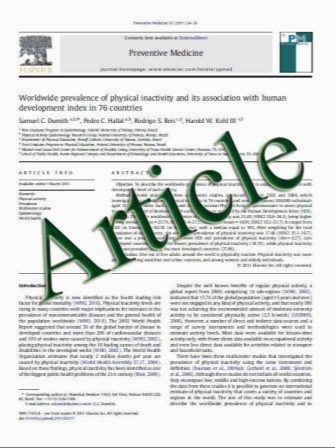Pulmonary Function and Abdominal and Thoracic Kinematic Changes Following Aerobic and Inspiratory Resistive Diaphragmatic Breathing Training in Asthmatics
- نوع فایل : کتاب
- زبان : انگلیسی
- مؤلف : Brandon S. Shaw • Ina Shaw
- چاپ و سال / کشور: 2011
Description
This study investigated the effect of 8 weeks, three times weekly, of aerobic exercise (AE), diaphragmatic inspiratory resistive breathing (DR), and aerobic exercise combined with diaphragmatic inspiratory resistive breathing (CE) on pulmonary function and abdominal and thoracic dimensions and kinematics in asthmatics. Eighty-eight inactive, moderate-persistent asthmatics were matched and randomly assigned to AE, DR, CE, or nonexercise control (NE) groups (n = 22 each). AE subjects walked and/or jogged at 60% of age-predicted maximum heart rate. DR subjects performed diaphragmatic breathing combined with inspiratory resistive breathing at varying inspiration, expiration ratios. CE subjects utilized a combination of the AE and DR programs. AE, DR, and CE significantly (p B 0.05) improved chest dimensions and kinematics during inspiration at the height of the second intercostal space, during inspiration and expiration at the height of the xiphoid process, and during inspiration and expiration at the height of the midpoint between the xiphoid process and umbilicus. All exercise interventions significantly improved FVC, FEV1, PEF, and IVC, while MVV improved following AE and CE. However, CE proved superior to AE at improving FVC (p = 0.001), FEV1 (p = 0.001), and IVC (p = 0.009). There were no significant changes (p[0.05) in any of the measured parameters in the NE group. CE produces adaptations greater than those for single-mode training in moderatepersistent asthmatics. The results suggest synergy rather than interference between aerobic exercise and diaphragmatic inspiratory resistive breathing and that this mode of training might be useful as an adjunct therapy in asthmatic patients.
Lung (2011) 189:131–139 DOI 10.1007/s00408-011-9281-8 Received: 19 November 2010 / Accepted: 27 January 2011 / Published online: 12 February 2011


